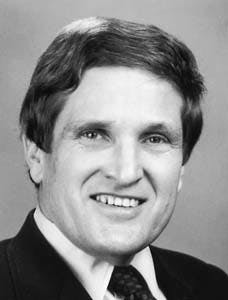Long Reserves Lives Sustain Prospects For Independents In The U.S. Lower 48
AMBIGUITY SURROUNDS ONE OF the major conceptions of reserves, specifically proved reserves, which are intended to capture the volume of petroleum present on and producible from a specific property.
From the beginning, the proved reserve concept was intended to serve as an indicator of the market value of that property and, by implication, its value for tax purposes or as loan collateral. Given the unavoidable uncertainty that existed about the 1) physical volume, 2) recoverability, and 3) cost of the invisible underground resource, it was appropriate that the proved reserve measure be both conservative and tightly defined, so that different appraisers would arrive at similar estimates.
The American Petroleum Institute is one of several authoritative sources whose efforts to define the concept of "proved reserves" have been important. Its significance to the development of an accepted definition is an outgrowth of its early efforts to collect and report in a consistent fashion data that tracked the nation's petroleum resources by field, basin, and state. Joining the API in these efforts were the American Gas Association and Canadian Petroleum Association.
Subsequently, the Department of Energy's Energy Information Administration contributed to refinement, or as is argued here, the revision of the definition of proved reserves. This contribution by the EIA was likewise a primary consequence of its taking over the data collection and publication functions that previously were the purview of the API and AGA.
The EIA liberalized the definition of "reserves" used by API in the 1960s. Where API included volumes of crude oil that geological and engineering information indicated to be recoverable "beyond reasonable doubt," EIA specified volumes that geological and engineering data showed "with reasonable certainty to be recoverableellipse."
EIA also specified how the secondary recovery techniques could be factored into reserves calculations. API essentially required that secondary recovery volumes not be counted as reserves until investments had been made in the related operations.
The administration also included in the proved category deposits for which no production, gathering, or transportation facilities have been installed, thus softening API's original stance that reserves include only volumes recoverable "under prevailing conditions."
Further, in what may be an unintended liberalizing of the standards for estimating proved reserves, the EIA defines the term "ultimate recovery" by making reference to what is meant by "proved reserves," calling ultimate recovery the "sum of cumulative production to date plus the current estimate of proved reserves."
The shift in definition of proved reserves has thus represented a move away from their function as an indicator of current financial value for individual properties, which represents the hydrocarbons believed to be producible without further fixed investment in step-out drilling facilities or enhanced recovery. The direction is toward a larger and more strictly physical measure of the producible resources believed to be available but only to the extent that such additional investments are made.
Clearly, the estimate of "proved reserves" under the EIA definition appears more expansive than permitted under the original API definition. Nevertheless, it is still inevitable that even EIA's estimated proved reserves will be sustantial understatements of the oil that with reasonable certainty will be recovered in the future from oil fields.
Three of four criticisms applied in 1965 by the think-tank Resources for the Future to the API definition of "reserves" apply just as well to the EIA version:
"1. In the first place, the figures for new discoveries in any year are limited by the specified restrictive definitions. Very little oil is proved recoverable in the year of discovery for any given field or well. But the statistical evidence shows that the initial amounts will, in the aggregate, be multiplied several times over by extensions and revisions in later years.
"2. The defined basis of estimating extensions due to early development drilling also leaves an unestimated accrual to be added in later years.
"3. The same may be said of additions in the field of revisions based on increasing knowledge of the geological characteristics of developed fields."1
Reference
- Lovejoy, W.F., Homan, P.T., "Methods of Estimating Reserves of Crude Oil, Natural Gas, and Natural Gas Liquids," Johns Hopkins Press, 1965, p. 16.
The Authors
David B. Hatcher, formerly vice-president of Arlon R. Tussing & Associates Inc. (ARTA), is currently a principal of Spectrum Economics Inc., where he specializes in antitrust and economic damage evaluations. He earned his PhD in economics from Duke University and has held senior positions with the U.S. Department of Energy, Federal Energy Regulatory Commission, and International Energy Agency.
Arlon R. Tussing is professor of economics in the Institute of Social and Economic Research at the University of Alaska in Anchorage. During the 1970s he served as chief economist of the U.S. Senate Committee on Energy and Natural Resources. In 1977, Tussing formed Arlon R. Tussing & Associates (ARTA), an economic consulting firm in Seattle, Wash., specializing in energy, public utilities, and natural resource analysis and policy. He holds degrees from the University of Chicago and Oregon State University and a PhD in economics from the University of Washington.
Copyright 1997 Oil & Gas Journal. All Rights Reserved.


